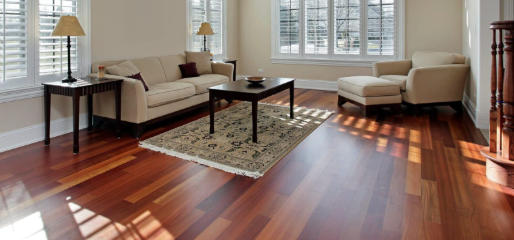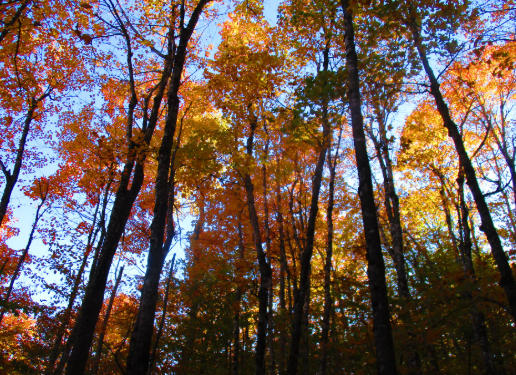Views: 222 Author: Rebecca Publish Time: 2025-11-06 Origin: Site











Content Menu
● Botanical Classification: Hardwood vs. Softwood
>> Hardwood
>> Softwood
● Hardwood vs Softwood: Growth Rate and Availability
● Physical Properties of Timber
>> Strength, Density, and Durability
>> Hardness
>> Weight
● Anatomical Structure Under the Microscope
● Notable Species and Their Characteristics
>> Hardwoods
>> Softwoods
● Environmental Considerations
● Cost Factors and Workability
● Timber in Trade and Industry
● Timber Identification: Practical Techniques
>> Workability
>> Exceptions
● Cultural and Historical Significance
● Choosing the Right Timber for Your Project
● Frequently Asked Questions (FAQ)
>> 1. Is hardwood always harder than softwood?
>> 2. What physical features help identify hardwood and softwood timber?
>> 3. Why are softwoods used more in construction?
>> 4. Are hardwoods more sustainable than softwoods?
>> 5. What are some popular hardwood and softwood species?
Timber forms the backbone of the global construction and woodworking industries. Understanding whether timber is hardwood or softwood is critical for builders, architects, manufacturers, and carpenters, as it determines performance, cost, environmental impact, and optimal use. Despite their names, hardwood is not always harder than softwood—classification is more botanical than physical, with each type exhibiting unique properties and advantages.[1][2]

Timber, often referred to as lumber, is wood that has been processed into beams, planks, or boards. It is used extensively in construction, cabinetry, furniture, and decorative arts. Timber's source—whether it is classified as hardwood or softwood—influences its potential applications, durability, and cost.[5][9][1]
Hardwoods originate from angiosperm trees, which are typically deciduous. These trees have broad leaves that tend to fall off during autumn. Commonly, hardwood trees bear seeds within fruit or a shell, such as acorns or apples. Hardwood's cellular structure includes visible vessels or pores, which transport water and nutrients and produce a unique grain pattern. Examples include oak, maple, walnut, mahohany, and cherry.[4][7][8][10][1]
Softwoods come from gymnosperm trees, mainly conifers such as pine, spruce, cedar, and fir. These trees often remain evergreen, retaining their needle-like leaves all year round. Their seeds are typically exposed, falling freely from cones. Softwoods' simpler cell structure lacks the visible pores of hardwood; water moves through cells called tracheids, resulting in a softer, less pronounced grain.[2][7][11][1][4]
Hardwoods generally grow much slower, sometimes taking decades or centuries to mature. This slow growth contributes to their denser, more complex structure and upscale price. In contrast, softwoods reach harvest maturity in as little as 40 years, making them faster to replenish and more readily available. This accessibility means softwood products are more commonly found and typically less expensive in the marketplace.[6][2]
Hardwoods are usually denser and stronger due to their intricate cellular makeup, making them ideal for applications requiring longevity and resistance—such as floors and heavy furniture. They offer substantial fire resistance and tend to be less likely to dent or scratch. Softwoods, while easier to manipulate and lighter, can be less durable and sometimes require treatment to withstand weather and decay, such as pressure-treating for outdoor use.[1][2][5][6]
Although the term “hardwood” suggests superior hardness, there are exceptions. Some hardwoods, like balsa, are softer than the hardest softwoods, such as yew. Conversely, some softwoods can be surprisingly robust. Therefore, timber's hardness depends on species and application, not solely classification.[3][5]
Hardwoods possess heavier, distinctive grain due to their visible pores and complex structure. They range from deep browns and reds to golden and black tints. Softwoods tend to display lighter colors—pale yellows or straw hues—with straighter grains and more frequent knots.[2][5][1]
Due to higher density, hardwoods are typically heavier than softwoods. Weight is a critical consideration for structural uses and transport logistics.[1][2]
The anatomy of timber at the cellular level reveals important distinctions.
- Hardwoods: Tube-like vessel elements (pores) give hardwood timber its visible grain and provide channels for water and nutrient transportation. This complex cell structure supports greater density.[8][2][1]
- Softwoods: Characterized by simpler, uniform longitudinal tracheids and medullary rays; water is moved without visible pores, resulting in smoother, softer timber cell walls that yield a less pronounced grain.[2][1]
| Timber Type | Notable Species | Color/Grain | Density/Strength | Common Uses |
|---|---|---|---|---|
| Hardwood | Oak | Dark, prominent grain | Very dense, strong | Flooring, furniture |
| Cherry | Rich reddish-brown | Medium density, good strength | Cabinets, musical instruments | |
| Maple | Pale, smooth grain | Hard, durable | Flooring, bowling alleys | |
| Mahogany | Deep red, decorative | Dense, workability | Luxury furniture | |
| Softwood | Pine | Pale, knotty | Light, flexible | Framing, paneling |
| Spruce | Light with subtle grain | Light, resilient | Construction, soundboards | |
| Fir | Straight grain | Medium strength, stable | Joists, plywood | |
| Cedar | Aromatic, uniform | Naturally rot-resistant | Outdoor furniture, siding |
[4][5][6][1][2]

- Residential and commercial flooring.
- High-end furniture and cabinetry.
- Decorative veneers.
- Musical instruments with rich resonance.
- Shipbuilding, tool handles, and wood carving.
- Historic architecture and restoration projects.
Hardwoods are favored where their strength, durability, and visual appeal are paramount. Their natural resistance to fire and abrasion also makes them a choice for demanding environments.[5][6][1]
- Structural framing for buildings and bridges.
- Roof trusses and studs.
- Interior moldings, doors, windows, and timber cladding.
- Paper manufacturing and packaging.
- Pallets, plywood, and cheaper household furniture.
Softwood's rapid growth, ease of workability, and lower price point make it ideal for mass-market and construction-oriented implementations.[9][6][4][2]
Softwoods' rapid growth makes them more sustainable and easier to farm using responsible forestry practices. Plantation softwoods from certified sources are preferred for minimizing environmental impact. Hardwoods, due to their slow growth, are more challenging to harvest sustainably and often face supply constraints and higher costs.[12][13][4]
Both hardwoods and softwoods act as carbon sinks, storing large amounts of CO₂ throughout their lifespans. However, softwoods tend to be used in greater volumes due to their abundant supply, which can reduce pressure on slower-growing hardwood species when sourced responsibly.[12][4][2]
Hardwoods are generally more expensive, often priced by rarity, quality, and demand. Working with hardwood requires special tools and expertise; its density can dull blades quickly and make shaping challenging. Softwoods, in contrast, are less costly, easier to machine, and ideal for projects where budget and speed matter.[6][5][2]
Softwood dominates the international timber trade because of its suitability for quick, large-scale production and versatility in construction. Pine and spruce are staples in North American and European building industries. Hardwoods, with their prestige and performance, are highly valued in specialized applications, luxury sectors, and restoration efforts.[5][12][1]
- Hardwoods: Look for visible pores and complex, pronounced grain.
- Softwoods: Smooth, poreless surfaces with straight, even grains.
- Weight and density tests: Hardwoods are generally heavier per cubic foot than softwoods.
- Color: Hardwoods are typically darker than softwoods.
- Hardwood sources: Broad-leaved, shed leaves seasonally; seeds within fruit.
- Softwood sources: Needle-like leaves, evergreen; seeds exposed in cones.
- Hardwoods: More prone to splitting, require sharp tools.
- Softwoods: Easier to saw, nail, and glue.
- Some hardwoods (e.g., balsa, poplar) are softer than softwoods.
- Some softwoods (e.g., yew) surpass certain hardwoods in density and durability.[3][1][5]
- Most exterior softwoods require pressure treatment to resist moisture, insects, and decay.
- Hardwoods are naturally more resistant to the elements but benefit from oiling, staining, or sealing.
- Untreated timber, whether hardwood or softwood, will weather to a grey tone over time.
Proper treatment extends timber's lifespan and maintains its appearance in challenging environments.[6][1][2]
Modern engineered woods, such as cross-laminated timber (CLT), glue-laminated timber (glulam), and wood-plastic composites, combine properties of both hardwoods and softwoods. These innovations enhance structural integrity, fire resistance, and sustainability in contemporary architecture and design. Recycled timber products further reduce environmental impact and offer creative opportunities for green manufacturing.[4][1][5]
Timber has shaped civilizations for centuries. Oak and mahogany have a storied role in shipbuilding, while pine dominates traditional house framing. Hardwood carving and fine woodworking are prized in Asian and European cultures alike. Softwood's universality has fueled the rapid expansion of North American and Scandinavian timber industries.[12][1][5]
Selecting timber involves balancing performance, aesthetics, cost, and environmental stewardship.
- For furniture or decorative work, hardwood is usually preferred for its beauty and durability.
- For structural, framing, and budget-sensitive applications, softwood is unrivaled for value and ease of handling.
- Always specify sustainably harvested timber—look for FSC or PEFC certification.
- Understand local climate and exposure, as untreated timber may degrade quickly.
Professional consultation and careful project planning maximize the benefits of choosing the correct timber type.[2][4][5][6]
Timber is classified as hardwood or softwood based on its botanical origin, not solely physical characteristics. Hardwoods—derived from angiosperm trees—are typically slower-growing, denser, and stronger, making them ideal for high-quality, long-lasting applications. Softwoods come from gymnosperm trees, which grow faster and are easier to work, favored for construction, mass-market products, and quick replenishment. Understanding the differences helps consumers, builders, and manufacturers select the best timber for their needs, balancing sustainability, performance, and cost. Both hardwood and softwood offer unique advantages—choose wisely according to your project's requirements and environmental principles.[1][5][6][2]

No. The classification is botanical, not by hardness. Some hardwoods (e.g., balsa) are softer than many softwoods. Always check individual species ratings.[3][5]
Hardwoods have visible pores (vessels), pronounced grain, heavier mass; softwoods have straighter grains, lighter color, visible knots, smoother surfaces.[16][1][2]
Softwoods grow quickly, are affordable, easy to work, and widely available—making them the preferred choice for framing, structural work, and mass-market materials.[4][6][2]
Generally, no. Softwoods are more sustainable because they replenish rapidly. Hardwoods require careful management and longer growth cycles, impacting supply.[13][12][4]
Hardwoods: Oak, maple, mahogany, cherry. Softwoods: Pine, spruce, cedar, fir—each with distinct properties for various uses.[17][5][1]
[1](https://duffieldtimber.com/the-workbench/timber-trends/hardwood-vs-softwood-what-are-the-differences)
[2](https://www.buskirklumber.com/hardwoods-vs-softwoods/)
[3](https://www.reddit.com/r/BeginnerWoodWorking/comments/4ltmwy/please_explain_hardwood_vs_softwood/)
[4](https://www.laver.co.uk/blog/hardwood-vs-softwood-whats-the-difference.html)
[5](https://northcastlehw.com/blogs/wood/hardwood-vs-softwood-lumber-uses-and-differences)
[6](https://www.arnoldwood.com/blog/what-is-the-difference-between-hardwood-and-softwood/)
[7](https://ubhardwoods.com/About/Blog/entryid/29/what-is-the-difference-between-hardwood-and-softwood)
[8](https://extension.psu.edu/hardwood-or-hard-wood/)
[9](https://www.homedepot.com/c/ab/types-of-lumber/9ba683603be9fa5395fab90567851db)
[10](https://www.facebook.com/groups/oldwoodstoves/posts/2689043034639555/)
[11](https://www.reddit.com/r/Survival/comments/n7yo43/how_do_you_tell_the_difference_between_a_soft_and/)
[12](https://architizer.com/blog/practice/materials/softwood-cladding/)
[13](https://forestrycommission.blog.gov.uk/2025/07/31/dont-get-stumped-by-timber-terms-understanding-the-differences-between-hardwood-and-softwood/)
[14](https://www.youtube.com/watch?v=2jBkjzDoS9A)
[15](https://www.youtube.com/watch?v=69mJxpAIE6o)
[16](https://www.wood-database.com/wood-articles/wood-identification-guide/)
[17](https://www.thisoldhouse.com/woodworking/21016071/how-to-identify-hardwoods-and-softwoods)